
In this modern age, there’s just no need to drag around an Earth-destroying vintage amp head. Take advantage of the multitude of improvements in manufacturing and buy yourself a mini guitar amp head that combines all the tone and modern amenities into a package that is smaller than a combo amp. Our list includes mini versions of venerable, well-known amplifiers as well as near-novelty amps designed to chase the tone of the big makers. We’ve tried to include something for everyone on this list, from professionals to total novices.

|
|
Price: $1,347.00 Shop now at zZounds | Shop now Read our review |

|
Amazon Customer Reviews
|
Price: $856.50 Shop at Amazon | Shop now Read our review |

|
|
Price: $999.00 Shop now at zZounds | Shop now Read our review |

|
Amazon Customer Reviews
|
Price: $159.00 Shop at Amazon | Shop now Read our review |
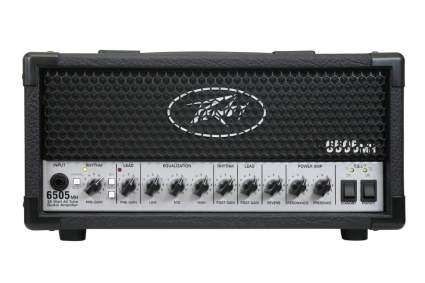
|
Amazon Customer Reviews
|
Price: $699.99 Shop at Amazon | Shop now Read our review |
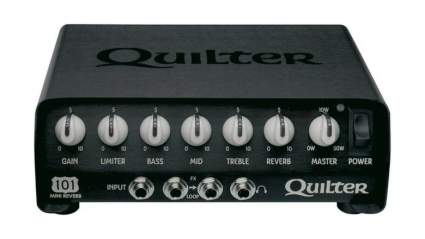
|
Amazon Customer Reviews
|
Price: $499.00 Shop at Amazon | Shop now Read our review |
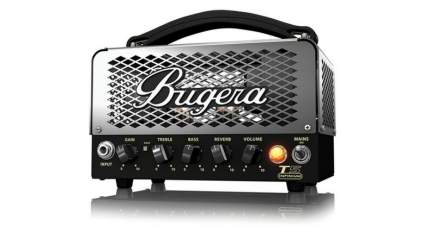
|
Amazon Customer Reviews
|
Price: $219.00 Shop at Amazon | Shop now Read our review |

|
|
Price: $999.99 Shop now at ENGL Amps | Shop now Read our review |
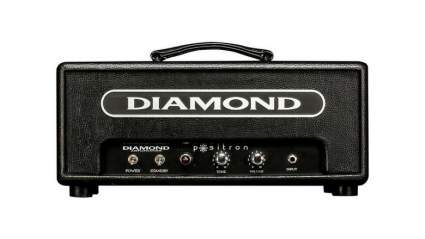
|
|
Price: $799.00 Shop now at Diamond Amplification | Shop now Read our review |
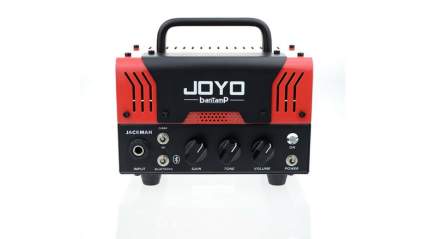
|
Amazon Customer Reviews
|
Price: $149.99 Shop at Amazon | Shop now Read our review |

|
Amazon Customer Reviews
|
Price: $99.99 Shop at Amazon | Shop now Read our review |
-
1. EDITOR’S CHOICE: Mesa Boogie Mini-Rectifier 25
Price: $1,347.00Pros:- 2 channels with independent controls
- 10 or 25 watt modes
- 4 voice options
Cons:- High price tag
- Wattage is somewhat inherent to the tone of the larger Rectifiers
- Limited I/O options
The Mesa Boogie Mini-Rectifier 25 is a fully-featured monster amp in a small package. Distilling the tones of its larger brethren into a mini amp head, this Mini-Rectifier is still going to be plenty loud at 25 watts. You get two channels with entirely independent controls; that’s both EQ and volume.
What sets this apart from a great many other options is that not only can you choose between the clean and drive channels, each of those channels can be configured separately using one of four different voices. The clean channels allow you to choose between standard Clean and Pushed, which gives you that edge-of-breakup chunky tone.
The drive channel has a Vintage and a Modern setting, the function of which should be fairly obvious to most. In addition, each channel is independently selectable between 10 and 25 watts, which gives you a multitude of on-the-fly headroom and drive options to be dialed in for your bedroom or stage needs. The Mini-Rectifier may be pricey but it is certainly one of the best mini guitar amp heads out there for guitarists of all varieties.
Specs:
- Amp type: Tube
- Wattage: 10 to 25 watts
- I/O options: Speaker out
- Speaker output resistance: 4 to 8 ohms
- Number of channels: Two
- Reverb?: No
- Other features: Effects loop
- Country of manufacture: USA
Find more Mesa Boogie Mini-Rectifier 25 information and reviews here.
-
2. Hughes & Kettner TubeMeister Deluxe 20
Pros:- Power attenuator selects between 20, 5, 1 watts
- 2 channels and lead boost
- Emulated DI out
Cons:- No reverb
- EQ is shared between channels
- Some quality control issues
Hughes & Kettner’s TubeMeister line has been landing in a lot of places of late. In particular, this model is very good for home recording thanks to its small size and power attenuation options. It also offers a DI out, which is a nice touch regardless of where you’re playing.
Controls include a three-band EQ shared between the clean and drive channels. Each channel gets its own Master and Gain knob, and there’s also a lead boost. By using a MIDI foot controller like the FS-2 footswitch, you can easily swap channels or engage the boost as needed. There power attenuation knob on the back too so you can bleed some of the output power before it hits the speaker cabinet.
Choose between 20, five, and one watt, as well as a mute which allows for silent recording and doesn’t require a speaker to be plugged in to load the circuit. On that front, the DI out is emulated, with a couple of options on handy switches right next to it, including for Vintage and Modern voicing, Small and Large cabinet sizes, Line or Mic level, and an on/off switch. There’s also an effects loop to round it all out.
Specs:
- Amp type: Tube
- Wattage: 20 watts
- I/O options: Speaker outs and XLR DI out
- Speaker output resistance: 8 to 16 ohms
- Number of channels: Two
- Reverb?: No
- Other features: Effects loop, power attenuator, mute for silent playing with no speaker plugged in
- Country of manufacture: China
Find more Hughes & Kettner TubeMeister Deluxe 20 information and reviews here.
-
3. Victory BD1
Price: $999.00Pros:- Handbuilt in the U.K.
- Blend level for effects loop
- Very compact for this amount of all-tube power
Cons:- No reverb
- No advanced I/O options
- Limited tone-shaping
If I were shopping for a new amp right at the moment, offerings from the Victory Compact Series would be at the top of my list. I’ve loved their sound in all the various guitar gear videos I watch, and the price is reasonable for a handbuilt amp head of this quality. The one that most fits the theme of this list is the BD1, which is the black version of Rob Chapman’s signature amp.
The BD1 is the smallest of their small offerings, with three 12AX7s and two EL84s working together to make 28 watts. Gain, Contour, and Master knobs dial in your sound with help from Bright and Deep switches.
You can run this in full power or 2-watt mode depending on context using any combination of the 16 ohm or dual 8-ohm outputs. The finishing touch is that the effects loop has a mix knob on the back for setting the exact level of your pedals relative to the preamp level.
Specs:
- Amp type: Tube
- Wattage: 28 watts
- I/O options: Two 8 ohm speaker outs and one 16 ohm speaker outs
- Speaker output resistance: 8 to 16 ohms
- Number of channels: One
- Reverb?: No
- Other features: Effects loop with blend level, low power mode
- Country of manufacture: United Kingdom
Find more Victory BD1 information and reviews here.
-
4. Orange Micro Terror 20-Watt Head
Pros:- Super compact
- Great driven tone
- Tube preamp
Cons:- Clean headroom very limited
- Limited tone-shaping options
- Hybrid amps won't appeal to all
Taking after its older brother the Tiny Terror, the Orange Micro Terror helped define the lunchbox style, which is known for bringing crushing tones to easy-to-move units. The Micro Terror delivers 20 watts of actual tube tone using a 12AX7 valve preamp — and it is substantially cheaper than a CR120H. This amp consistently surprises doubters and in many ways, it sets the benchmark for what mini guitar amp heads are all about.
This simple unit includes controls for Volume, Tone, and Gain. The matching cabinet is available for a reasonable price. If you need a little more bass response, you might opt for the PC112C 1×12 cab instead. If you don’t love the bright orange color scheme, the Dark Terror is a nearly identical option that delivers the same size-to-power ratio with a slightly different feature set.
Specs:
- Amp type: Hybrid
- Wattage: 20 watts
- I/O options: Headphone jack, aux in, and speaker out
- Speaker output resistance: 8 ohm minimum
- Number of channels: One
- Reverb?: No
- Other features: None
- Country of manufacture: China
Find more Orange Micro Terror 20-Watt Head information and reviews here.
-
5. Peavey 6505 MH
Pros:- Power attenuator
- Modern I/O options
- Footswitch controllable effects loop
Cons:- Some don't think the mini sounds like the full-size version
- Shared EQ
- Lower wattage means the Lead channel can sound thin
Boiling a fully-featured amp head into a miniature package, the Peavey 6505 has a full slate of options to rival any larger unit. Unlike most of the options on this list, this is a two-channel amp with Rhythm and Lead channels that each have their own Pre-Gain and Post-Gain volume knobs.
They share a three-band EQ, but the Rhythm channel also has a Bright switch and a Crunch switch that boosts the channel into overdrive. Finally, the Power Amp section offers Resonance and Presence knobs to fine-tune the low and high-end response, respectively. Like the Bugera later on this list, there are two tube status monitoring LEDs perched over the power switches.
The back panel offers a plethora of modern amenities. First is the power attenuator that is selectable between one, five, and 20 watts alongside the 8/16 ohm resistance selector. The Mic Simulated Direct Interface section offers XLR and headphones out with a speaker mute and ground lift. There’s an effects loop that can be controlled with a footswitch, as can the channel selection. Finally, a USB output acts like the XLR out for directly connecting to a computer. It makes for an all-around versatile package.
Specs:
- Amp type: Tube
- Wattage: 20 watts
- I/O options: XLR out, USB out, headphone jack, and speaker out
- Speaker output resistance: 8 or 16 ohms
- Number of channels: Two
- Reverb?: Yes
- Other features: Power attenuator, ground lift, speaker mute, effects loop, channel and loop footswitch inputs
- Country of manufacture: China
Find more Peavey 6505 MH information and reviews here.
-
6. Quilter 101 Reverb 50W Guitar Amplifier Head
Pros:- Very compact
- Above average solid state tones
- Effects loop and reverb
Cons:- Some will not be sold on solid state
- Limited I/O options
- Almost always ends up as a backup amp instead of the main attraction
The Quilter 101 Reverb may be solid-state rather than tube-driven, but the technology packed into this little gem more than makes up for it. The manufacturers have found a way to jam a huge amount of headroom into this amp, which delivers the transients and harmonics you expect from a high-quality tube amp but without the bulky form factor.
The master volume on this works as a wattage controller, allowing you to dial in anything from zero to 50 watts. This is the second version, which replaces the two-knob EQ with a more traditional three-band section. There’s even an effects loop, conveniently located in the front of the amp. Gain, Limiter, and Reverb knobs round out the control panel.
Sure, the I/O options are somewhat limited but the Quilter 101 Reverb is a more than capable solid-state amp head that won’t break the bank or your back.
Specs:
- Amp type: Solid state
- Wattage: 50 watts
- I/O options: Headphone jack and two speaker outs
- Speaker output resistance: 4, 8, or 8+8 ohms
- Number of channels: One
- Reverb?: Yes
- Other features: Effects loop and limiter
- Country of manufacture: United States
Find more Quilter 101 Reverb 50W Guitar Amplifier Head information and reviews here.
-
7. Bugera T5 Infinium
Pros:- Tube life monitor
- Power attenuator
- Low price tag
Cons:- Power attentuation a touch silly with a max of five watts
- Still some quality control concerns
- Not really giggable
While Bugera may not have the same kind of renown as other major manufacturers, the brand has come into its own after emerging from an early history of sub-par craftsmanship. Now their mini guitar amp head, the T5 Infinium, has a fairly dedicated following thanks to its solid tone and low price.
This handsome little unit puts out a max of five watts, which is enough to be mic’d in small clubs and great for recording. Controls for Gain, Treble, Bass, and a master Volume make up the front panel. The Phat switch is basically a boost circuit and bypasses the EQ settings. On the back, a three-way power attenuator further complements at-home use with options for 0.1, one, and five watts.
In addition to the speaker out and headphone jack, there’s an LED that indicates the tube life. If lit, the tubes are on their way out. It may be nothing your ears can’t readily detect, but it’s still a nifty little feature.
Specs:
- Amp type: Tube
- Wattage: 5 watts
- I/O options: Headphone jack and speaker out
- Speaker output resistance: 4 ohm minimum
- Number of channels: One
- Reverb?: Yes
- Other features: Tube life monitor and power attenuator
- Country of manufacture: China
Find more Bugera T5 Infinium information and reviews here.
-
8. ENGL Amplification E 309 MetalMaster 20 Head
Price: $999.99Pros:- Handbuilt in Germany
- DI out
- 2 channels and reverb
Cons:- Somewhat pricey
- Reverb is digital
- Channels share a single EQ
For those metal-inclined, ENGL has this handbuilt offering for you. This is a two-channel 20 watt amp driven by two ECC83 tubes in the preamp and two EL84s in the power amp section. The two channels share the three-band EQ, and there’s a Mid Scoop switch. Speaking of switching, you can use an external footswitch to switch between the effects loop or the on-board digital reverb, and another with a stereo ¼ inch in to access both the channel switching and the Mid Scoop state.
The rest of the controls are Clean Gain, Lead Gain, Reverb, Lead Volume, and Master volume. The effects loop is in the back, as is a balanced line out for front-of-house use. The speaker outs allow for standard eight or 16-ohm cabinets, dual eight-ohm cabinets, or eight to 16-ohm power soak options — see the manual here for more on that.
Specs:
- Amp type: Tube
- Wattage: 20 watt
- I/O options: Balanced line output and three speaker outs
- Speaker output resistance: 8 or 16 ohms
- Number of channels: Two
- Reverb?: Yes
- Other features: Effects loop and power attenuator
- Country of manufacture: Germany
Find more ENGL Amplification E 309 MetalMaster 20 Head information and reviews here.
-
9. Diamond Amplification Positron 18W Guitar Amplifier
Price: $799.00Pros:- Class A tube amp
- Straightforward and simple
- 3 12AX7 tubes in the preamp and two EL84s in the output
Cons:- Expensive
- Zero additional I/O options
- Very limited tone-shaping
Just about everything else on this list is loaded with gadgets. But what if you just want a straightforward make-louder device? This might be the option for you. This is an all-tube Class A amp in a tiny package. Anything that could get in the way is stripped out, leaving you an essential tone machine with — you guessed it — three 12AX87 preamp tubes and two EL84 output tubes.
Controls are as basic as it gets with a Tone knob and a Volume knob. Turn it up, toss a boost pedal in front of it, and get to work.
If you need more options (and really, I can’t blame you), you could try the bigger brother Assassin, which has a four-band EQ and a diode clipping gain stage mode.
Specs:
- Amp type: Tube
- Wattage: 18 watts
- I/O options: Speaker outs
- Speaker output resistance: 8 or 16 ohm
- Number of channels: One
- Reverb?: No
- Other features: None
- Country of manufacture: China
Find more Diamond Amplification Positron 18W Guitar Amplifier information and reviews here.
-
10. Joyo Jackman II BanTamp JCM800
Pros:- 2 channels
- Hybrid amp power
- Very compact
Cons:- More gadgetry than tone
- Questionable emulation of named amps
- Looks a bit like a toy
If you want that signature Marshall sound but can’t afford the premium price tag that comes with a premium brand, then consider some clone hardware. You can get a fairly good emulation of a Marshall head in the Joyo Jackman II BanTamp JCM800. The same goes for the Mesa Boogie signature sound in the Joyo Zombie, the Orange signature sound in the Joyo Meteor, the Vox signature sound in the Joyo Atomic, et cetera.
If you can think of an iconic amplifier, then this company probably makes its own budget version of it. Are they on quite the same level as the originals? Not exactly. But are they close enough for the price? We think so. After all, mini guitar amp heads are all about convenience anyway, and what is more convenient than a budget price tag?
The standout difference between the Joyo JCM800 and the Marshall JCM800, though, is that the Joyo build is a hybrid amp whereas the vintage source material is a dual tube amplifier. Each of the BanTamps uses a single 12AX7 preamp tube and a class D solid state output section which generates a relatively high wattage.
The BanTamp Series amps also have a Gain, Tone, and Volume knobs, and each has a “channel” switch that either controls a Bright circuit or an Overdrive circuit, depending on the model. They have Bluetooth support as well but this is a total gimmick and not at all a useful feature in the studio or practice room.
All in all, these Joyo clones are a great way to add lots of new tones to your arsenal without going bankrupt.
Specs:
- Amp type: Hybrid
- Wattage: 20 watts
- I/O options: Headphone jack, Bluetooth audio, and speaker out
- Speaker output resistance: 8 ohm minimum
- Number of channels: Two
- Reverb?: No
- Other features: Bluetooth connectivity and effects loop
- Country of manufacture: China
Find more Joyo Bantamp Jackman information and reviews here.
-
11. Hotone Nano Legacy Purple Wind
Pros:- Super tiny
- Inexpensive
- Effects loop
Cons:- Even more toy-like than the Joyo
- Non-existent headroom
- Solid-state and it shows
Just like the Joyo BanTamps above, the Hotone Nano Legacy Purple Wind is from another line of inexpensive vintage tube head clones. And though these solid-state versions pale in warmth and depth compared to vintage gear, they still get the job done for cheap.
This model is specifically inspired by the legendary Marshall Plexi Super Lead 1959. Considering a used Plexi Super will cost you a couple grand, the Nano Legacy Purple Wind can frequently be found for under $100. Plus it is incredibly compact in comparison. It is about the size of your palm!
This amp head is equipped with a three-band EQ and an effects loop in the back of the unit. It also includes a headphone jack/line output and an auxiliary in. We tested this one for a month or so and were pretty impressed with it. Headroom is virtually non-existent but this amp works well as a miniature fire-breather, especially if you turn the gain all the way up. For use in the studio, these are almost cheap enough to buy one of each, just to have access to a decent guitar preamp inspired by vintage tones.
The Nano Legacy line also includes the following models, each of which are designed to sound like a classic amp:
- Mojo Diamond — Fender Tweed
- British Invasion — Vox AC30
- Heart Attack — Mesa Boogie Dual Rectifier
- Thunder Bass — Ampeg SVT
- Siva Boogie — Bogner Shiva
- Eagle’s Heart — ENGL Savage 120
- Captain Sunset — Soldano SLO 100
- Vulcan Five-O — Peavey 5150
- Freeze B — “famous boutique UK-style high gain amp head” (your guess is as good as ours)
For the records, we don’t feel as confident in the Nano Legacy speaker cabinet as we do in their amp heads. But since you’re saving so much money by going with these tube amp head clones, then maybe you can spend a little more on a nicer cabinet.
Specs:
- Amp type: Solid-state
- Wattage: 5 watts
- I/O options: Headphone jack, aux in, and speaker out
- Speaker output resistance: 4 to 16 ohms
- Number of channels: One
- Reverb?: No
- Other features: Effects loop
- Country of manufacture: China
What is a Mini Guitar Amplifier Head?
If you are a gigging musician, then you already know that a full guitar amplifier stack can be a serious burden to lug around. That's why many professional musicians either hire roadies or invest in a more portable set of gear for travel.
Not to be confused with mini combo amps, which are by and large for fun or novelty, mini amp heads are real-deal, mostly-giggable amps that come in a smaller form factor. While those mini combos tend to be solid state only, these heads are often all-tube affairs, or at the very least hybrids with tube preamps.
Additionally, you aren't married to any specific speaker. By choosing your own cab, you can customize the experience even further, developing a rich tone of your own.
Most of these come in the so-called lunchbox form factor, which is a metal box with a handle on top. Some are conventional head designs shrunk down, and still, others are even smaller micro heads that fit in the palm of your hand.
You have your choice here between downright rustic amps with a pair of knobs to Bluetooth-enabled modern marvels. These super-small amps make wet/dry stereo setups very feasible, especially because many of them have effects loops.
The primary advantage of shrinking the amp head down is pretty obvious. It saves weight and space, both of which are at something of a premium for hobbyist and semi-professional players. Even some all-pros might appreciate the sheer ease of use of these small yet mighty amps, and their increasing ubiquity means they can easily compete tone-wise with their larger counterparts.
Generally speaking, they tend to be cheaper, too, so it's easier to experiment with different types and brands and you won't even have to worry about your studio being stuffed to the gills with amplifiers.
Can You Gig with Mini Guitar Amp Heads?
For the most part, yes. Some of the lower wattage options may find you running out of clean headroom before you'd like, but thanks to advanced output options and the high likelihood that your cab will be mic'd at the venue, you should be able to gig with any of these.
Most of these will power a 4x12 cabinet with no problem, and since you've scaled down the amp, you'll probably want to bring a 2x12 anyway. Either way, these should do the job with no problem in most situations.
Also, one way these smaller amps excel is running dual amp setups, either as a stereo rig or wet/dry. The major advantage here is that two amp rigs sound a lot louder than they actually are and can have a wide sound image, which fills the stage very nicely without, you know, physically filling the stage.